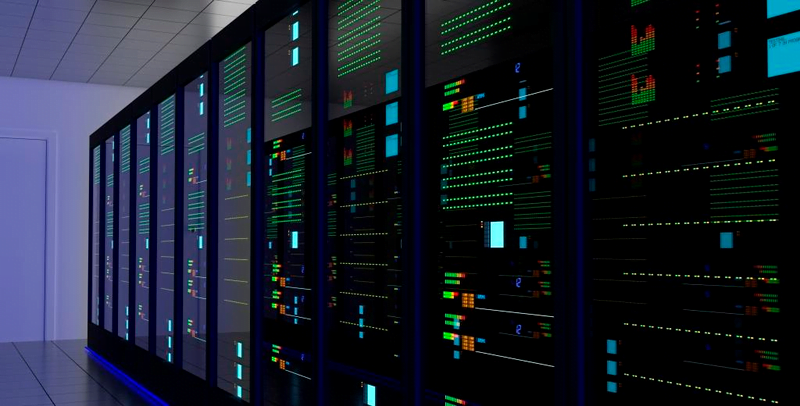

Cynics have been foretelling the imminent demise of the mainframe since the early 1990s, but all the evidence continues to point to the contrary. Today, 96% of the world’s banks and 71% of Fortune 500 companies continue to run mainframes, generating 30 billion transactions every single day. If these figures weren’t convincing enough, the latest earningsfrom IBM clearly show the mainframe is still booming, with sales from its zSeries growing by 21% over the year.
The resiliency of the mainframe might seem odd in the age of cloud computing, artificial intelligence and mobile. However, put simply, the mainframe has always been and remains the single most reliable, secure and scalable platform for processing the huge workloads generated in today’s digital economy. As we’re all ordering takeaways, taxis and tickets on our growing array of smart devices and apps, mainframes are powering away behind the scenes, crunching the numbers and processing the vast volume of transactions that keep these services running. With so much resting on its highly capable shoulders, why would anyone even contemplate moving off the mainframe? Rather than trying to phase it out, businesses should be asking how they can maximise on its potential to create an unbeatable competitive advantage.
Getting the mainframe to the table
The first challenge here is persuading any devout cynics that the mainframe still has its place as a major bread-winner at the table. The problem is that mainframes haven’t had a seat at the table for a very long time. Instead, they’ve been sitting in their own silo, running separate to the rest of IT. As a result, it’s always been viewed as something of a mystery to those working outside its inner circle. This is what IT teams must address if the mainframe is to be truly accepted and driven to achieve its full potential for the business. IT directors need to break down the barriers between mainframe and distributed application teams and integrate it as part of their mainstream DevOps and multi-platform IT environments.
This will become more important as the generation of experienced mainframe developers continues to retire. If things don’t change, then pretty soon we’ll reach the point where there will be nobody left to support the mainframe, except for those that are unfamiliar, disenchanted, or even afraid of it. In order to encourage their acceptance of it, the agile developers working in modern multi-platform environments need to realise that DevOps teams are only as strong as their weakest link. Since mainframe code provides a huge chunk of the digital DNA that defines how the business runs, it’s impossible to turn DevOps into a true competitive advantage if that one mainframe element sits in isolation. It’s therefore in everyone’s best interests to bring the mainframe into the fold of mainstream IT.
Breaking down the walls
To make this transition successfully, organisations must create a level-playing field that allows DevOps artisans to support the mainframe effectively. These artisans, working in agile development sprints, have to be able to bring that same approach to the mainframe in order to integrate it as part of a mainstream DevOps and multi-platform IT environment. As such, it simply won’t work if they are forced to learn esoteric mainframe development techniques and adopt outdated approaches. Distributed application and mainframe development teams should be able to use the same toolsets across the entire IT stack, whether they’re putting the finishing touches to the script of a brand new mobile app, or tweaking the underlying mainframe code-base that supports it. There are a number of ways that IT departments can create these capabilities.
Firstly, they should move away from the traditional green-screen environments associated with stuffy and outdated mainframe programming, as these are a major turn-off for distributed application developers. Overlaying these environments with Windows-like interfaces allows modern developers to work in ways they are more comfortable with, and removes the need for idiosyncratic knowledge. It’s also vital that both mainframe and non-mainframe experts understand the interdependencies between multi-platform application code and data. Without this, there’s a risk that a change introduced in the code of one application could have a derogatory impact on the functionality of another. Five nines reliability on the mainframe isn’t an aspiration. It’s an imperative.
One of Europe’s largest private banks is tackling this issue with visualisation techniques that give its developers intuitive insight into the relationships between its applications, so they can identify any potential problems in programming logic. This means they are able to find and fix issues that used to take hours to identify within just minutes, or avoid problems altogether by better understanding the implications of the coding changes they’re about to make.
A new dawn in the mainframe
Measures such as these will significantly reduce the barriers that have until now held businesses back from integrating the mainframe as part of their mainstream DevOps and multi-platform IT environments. As well as enabling DevOps teams to become more agile and achieve their full potential, breaking down the silos and bringing everyone together will also foster knowledge transfer between newer developers and the more experienced generation of mainframe experts. This will significantly alleviate the risk being created by the dwindling mainframe workforce, by ensuring a smooth transition to the new generations that will be responsible for its stewardship in the future. Once these generations are able to harness the immense power of the mainframe for themselves, who knows what dreams of unbeatable competitive advantages they’ll be capable of achieving for the business?
[Source:- Cloud-computing]

